Blue lyretail - Fundulopanchax gardneri gardneri
Scientific name: Fundulopanchax gardneri gardneri
Common name: Blue lyretail
Family: Nothobranchiidae
Usual size in fish tanks: 5 - 6 cm (1.97 - 2.36 inch)
014
Recommended pH range: 6.5 - 7.5
Recommended water hardness: 6 - 19°N (107.14 - 339.29ppm)
0°C 32°F30°C 86°F
Recommended temperature range: 22 - 25 °C (71.6 - 77°F)
The way how these fish reproduce: Spawning
Where the species comes from: Africa
Temperament to its own species: peaceful
Temperament toward other fish species: peaceful
Usual place in the tank: Middle levels
Introduction
Fundulopanchax gardneri gardneri, commonly known as the Blue Lyretail, is a stunning killifish species native to the marshes and tributaries of Nigeria and Cameroon. Known for their vibrant colors and adaptability, these fish are a popular choice for aquarists seeking a peaceful species with unique breeding behaviors. Their striking lyre-shaped fins and calm temperament make them a captivating addition to well-maintained aquariums.
Food and Feeding
Blue Lyretails thrive on a diet rich in live and frozen foods. Provide them with white worms, brine shrimp, tubifex, and mosquito larvae as the primary components of their diet. Supplement with high-quality flake food to ensure they receive a balanced nutrition. Feeding small portions multiple times a day helps mimic their natural feeding habits and maintains their vibrant coloration.
Habitat and Tank Requirements
To replicate their natural environment, set up a densely planted tank with floating plants such as Amazon Frogbit (Limnobium laevigatum) or Water Spangles (Salvinia minima). Include soft substrates and provide shaded areas with driftwood and rocks. Blue Lyretails prefer slightly soft to moderately hard water with a pH range of 6.5-7.5 and a hardness of 6-19°N (107.14-339.29 ppm). Maintain the water temperature between 22-25°C (71.6-77°F). Good filtration and regular water changes are crucial to maintaining water quality and ensuring their health.
Sexing
Males are brightly colored, featuring red spots along their bodies and yellow-tinged tips on their dorsal, anal, and caudal fins. Females are less colorful, displaying duller brown tones with spots along their bodies. This sexual dimorphism makes identifying males and females relatively straightforward.
Breeding
Blue Lyretails are substrate spawners, requiring a 2-3 inch layer of moist peat moss in the breeding tank. During spawning, the fish bury their eggs in the substrate. Once spawning is complete, remove the peat with the eggs, squeeze out excess water, and store it in a sealed plastic bag at room temperature for approximately three weeks. After this incubation period, rehydrate the peat in soft, warm water to induce hatching. Feed the newly hatched fry with infusoria or freshly hatched brine shrimp for optimal growth.
Lifespan
The average lifespan of Fundulopanchax gardneri gardneri is 2-3 years. Due to their short lifespan, breeding is essential to maintain their presence in aquariums.
Behavior and Compatibility
Blue Lyretails are peaceful and can coexist with other non-aggressive species in a community tank. Suitable tank mates include small, calm fish such as Ember Tetras (Hyphessobrycon amandae), Neon Tetras (Paracheirodon innesi), or Harlequin Rasboras (Trigonostigma heteromorpha). However, they are often best kept in species-only tanks to avoid competition and ensure their specific care needs are met.
Short Description
Fundulopanchax gardneri gardneri, or Blue Lyretail, is a peaceful and vibrant killifish ideal for aquarists who appreciate unique breeding behaviors and stunning coloration. Their adaptability to different water conditions and calm temperament make them a rewarding addition to planted tanks. A species-specific setup is recommended for optimal care and breeding success.
Pictures
Bought by aqua-fish.net from jjphoto.dk.
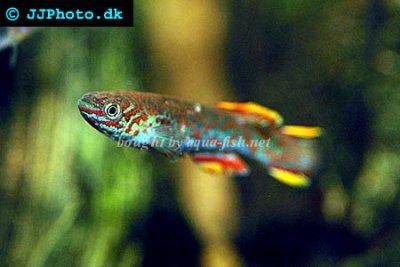


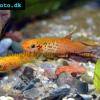 Lyretail
Lyretail 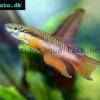 Splendid
Splendid 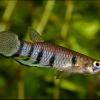 Redchin
Redchin  Panchax
Panchax 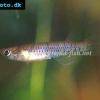 Sixbar
Sixbar  Amiets
Amiets  Blue
Blue 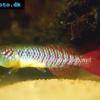 Guenthers
Guenthers  Banded
Banded